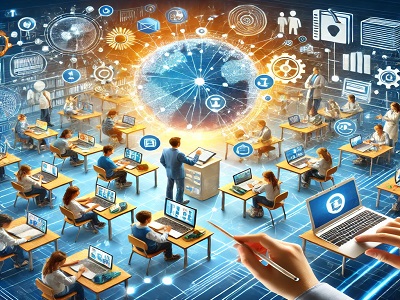In today’s rapidly evolving educational landscape, information technology (IT) services play a pivotal role in shaping student learning experiences and outcomes. With the integration of technology into the classroom, institutions are better equipped to meet the diverse needs of students, facilitate innovative teaching methods, and enhance overall academic success. Here, we explore the various ways in which IT services are transforming education and fostering student achievement.
As the educational landscape continues to evolve, the role of IT services in enhancing student learning and success cannot be overstated. From providing access to resources and fostering collaboration to offering personalized learning experiences and timely feedback, technology is a powerful ally in the pursuit of academic excellence. By embracing these tools and strategies, educational institutions can create a dynamic learning environment that supports all students in achieving their goals.
In a world where technology is ever-present, leveraging IT services is not just an option but a necessity for fostering the next generation of learners.
1. Accessible Learning Resources
One of the most significant advantages of IT services is the accessibility of learning materials. With online platforms and digital libraries, students can access a wealth of information from anywhere at any time. This democratization of knowledge enables students to take charge of their learning, explore subjects in depth, and engage with diverse perspectives.2. Personalized Learning Experiences
IT services allow for the implementation of personalized learning systems that cater to individual student needs. Adaptive learning technologies analyze student performance and tailor educational content accordingly. This personalized approach helps students learn at their own pace, ensuring that they grasp concepts before moving on to more advanced topics.3. Collaborative Learning Environments
Technology fosters collaboration among students and educators. Through online forums, collaborative documents, and project management tools, students can work together seamlessly, regardless of their physical location. This collaboration not only enhances understanding of the material but also builds critical teamwork skills essential for future career success.4. Real-Time Feedback and Assessment
IT services enable educators to provide immediate feedback through various digital assessment tools. These tools allow for quicker evaluations, enabling students to understand their strengths and areas for improvement in real time. Timely feedback is crucial for student development, as it encourages reflection and fosters a growth mindset.5. Engaging Learning Tools
Interactive technologies such as gamified learning platforms, virtual reality (VR), and augmented reality (AR) create immersive educational experiences. These tools engage students in ways traditional methods cannot, making learning more enjoyable and effective. By integrating technology into lessons, educators can captivate student interest and motivate them to explore new concepts.6. Support Services and Resources
IT services also enhance student support systems. Online tutoring, counseling services, and academic advising can be accessed via digital platforms, providing students with the help they need when they need it. Additionally, data analytics can identify at-risk students, enabling institutions to intervene early and provide the necessary support to enhance their chances of success.7. Career Preparedness
Incorporating IT services into education prepares students for the workforce by familiarizing them with the tools and technologies they will encounter in their careers. Skills such as digital literacy, data analysis, and online communication are increasingly important in the job market. By integrating these skills into the curriculum, institutions ensure that students are well-equipped for future challenges.As the educational landscape continues to evolve, the role of IT services in enhancing student learning and success cannot be overstated. From providing access to resources and fostering collaboration to offering personalized learning experiences and timely feedback, technology is a powerful ally in the pursuit of academic excellence. By embracing these tools and strategies, educational institutions can create a dynamic learning environment that supports all students in achieving their goals.
In a world where technology is ever-present, leveraging IT services is not just an option but a necessity for fostering the next generation of learners.



0 comments